Global Radiation Therapy Market - Comprehensive Data-Driven Market Analysis & Strategic Outlook
The global radiation therapy market and its industry will go on defining the course of contemporary cancer therapy in the forthcoming years. As healthcare institutions evolve with increased patient demands, radiation therapy will no longer be regarded as a secondary alternative but as an integral component of oncology planning. This market will be driven not only by technology but also by how hospitals, clinics, and research centers get ready for the needs of patients who will increasingly demand precision-based care. The global radiation therapy market will change as imaging methods, treatment planning software, and linear accelerators become more precise and lessening side effects. In contrast to previous decades where radiation therapy was less focused, the future generation of solutions will be tailored to attack malignant cells with unprecedented accuracy. This shift will change the nature of interactions between physicians and patients as well as equipment, reducing the time spent in therapy sessions, making it safer, and more efficient.
Yet another defining feature of the industry will be the partnership between device makers and educational institutions. The global radiation therapy market will be fuelled not only by commercial competition but by knowledge-sharing that will fuel steady refinements. Medical education programs will start to place greater weight on radiation oncology from a far earlier point, so the workforce will be well-equipped to handle sophisticated devices responsibly.
As spending on healthcare changes globally, this market will more and more echo the values of countries committed to making cancer treatment possible. The global radiation therapy market will eventually not only symbolize cutting-edge technology but also the potential for longer and more productive lives.
- Global radiation therapy market of about USD 7272.2 million in 2025, with CAGR of about 4.9% during 2032, and ability to reach beyond USD 10168.7 million.
- External Beam Radiotherapy contribute to about 70.7% market share, with innovative forces driving increased applications through rigorous research.
- Major trends propelling growth: Advances in radiation therapy equipment technology, Rise in cancer cases worldwide
- Opportunities are: Increasing demand for customized radiation therapy treatments
- Core insight: The industry is positioned to grow at an exponential rate in value over the coming decade, indicating strong growth opportunities.
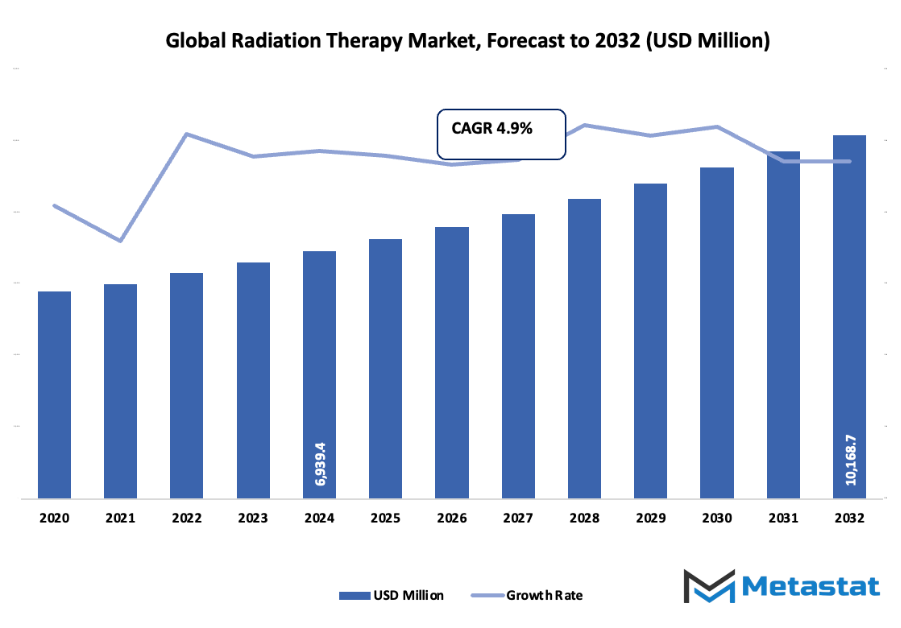
Market Segments
The global radiation therapy market is mainly classified based on Technology, Application, End-User.
By Technology is further segmented into:
- By Technology, External Beam Radiotherapy still leads the way through precision targeting and its non-invasive procedure. Increased uptake of advanced imaging technologies makes it more accurate, reducing damage to the tissues around the targeted area. The method is most commonly used since hospitals bring the latest equipment onboard, which enables its growth within the overall cancer treatment market.
- Conversely, Internal Beam Radiotherapy/Brachytherapy is picking up speed as it can deposit high doses locally at the site of the tumor. It treats localized cancers with implants or radioactive seeds. Advances in imaging and planning software will render this choice safer and more attractive in the future.
- Systemic Radiotherapy is an essential treatment for advanced cancer patients. With the use of radioactive materials that circulate through the bloodstream, it attacks cancer cells disseminated in the body. Radiopharmaceutical advancements will define its future use, providing improved outcomes for metastatic disease patients who require treatment for more extensive conditions than localized tumors.
By Application the market is divided into:
- Breast Cancer is caused by high incidence all over the world and consistent awareness efforts. Radiation therapy is now an accepted component of care for early and advanced breast cancer. With ongoing screening programs and improvement in technology, the application of radiation therapy in breast cancer treatment will continue to be a key growth driver.
- Prostate Cancer cases are rising with the aging population, thus radiation therapy is a treatment of choice. Latest delivery techniques minimize long-term side effects, enhancing the quality of life for the patient. Market expansion in this area will prevail as awareness, early diagnosis, and access to new therapies enhance in developed and developing nations.
- Lung Cancer remains one of the leading causes of cancer deaths globally, increasing the demand for effective treatment solutions. Radiation therapy offers significant benefits for patients who cannot undergo surgery. Advancements in imaging technology and targeted delivery systems are expected to expand its role in lung cancer management worldwide.
- In Brain Cancer, the role of radiation therapy is critical because it can be used to destroy tumors located in sensitive regions where surgery will be dangerous. Advanced imaging modalities in combination with accurate radiotherapy minimize the chance of injuring normal brain tissue. This segment is anticipated to grow as better strategies emerge.
- The Other Cancer segment consists of gastrointestinal, gynecologic, and skin cancers, where radiation therapy is also extensively utilized. Greater awareness of cancer and improved treatment planning resources are contributing to its expanding usage here. Future growth will depend on ongoing technological advancements and greater access to care in underserved areas.
By End-User the market is further divided into:
- Hospitals account for the largest proportion, as the majority of sophisticated cancer therapies are conducted in hospital facilities. Increasing infrastructure, investment in new equipment, and increased emphasis on integrated cancer care will continue to make hospitals the dominant end-user segment in the global radiation therapy market.
- Cancer Treatment Centers are expanding fast as dedicated institutions provide specialized care. These facilities are incorporating innovative technologies and delivering personalized treatments for various cancer types. Increasing demand for specialized care and patient choice of high-technology facilities will enhance the position of treatment centers in the entire market.
- Ambulatory Surgical Centers are becoming handy alternatives to outpatient cancer treatment. With less treatment cost and quicker service, these centers offer an alternative to big hospitals. As the need for affordable and accessible care increases, their role in providing radiation therapy is likely to grow manifolds in the coming years.
- The Others segment comprises research centers and private clinics, both helping to progress radiation therapy. They are important in the process of testing new approaches, educating specialists, and hosting nascent treatments. Their relevance will keep increasing as innovation and increased implementation of advanced technology define the market scenario.
|
Forecast Period |
2025-2032 |
|
Market Size in 2025 |
$7272.2 Million |
|
Market Size by 2032 |
$10168.7 Million |
|
Growth Rate from 2025 to 2032 |
4.9% |
|
Base Year |
2024 |
|
Regions Covered |
North America, Europe, Asia-Pacific, South America, Middle East & Africa |
By Region:
- Based on geography, the global radiation therapy market is divided into North America, Europe, Asia-Pacific, South America, and the Middle East & Africa.
- North America is further divided into the U.S., Canada, and Mexico, whereas Europe consists of the UK, Germany, France, Italy, and the Rest of Europe.
- Asia-Pacific is segmented into India, China, Japan, South Korea, and the Rest of Asia-Pacific.
- The South America region includes Brazil, Argentina, and the Rest of South America, while the Middle East & Africa is categorized into GCC Countries, Egypt, South Africa, and the Rest of the Middle East & Africa.
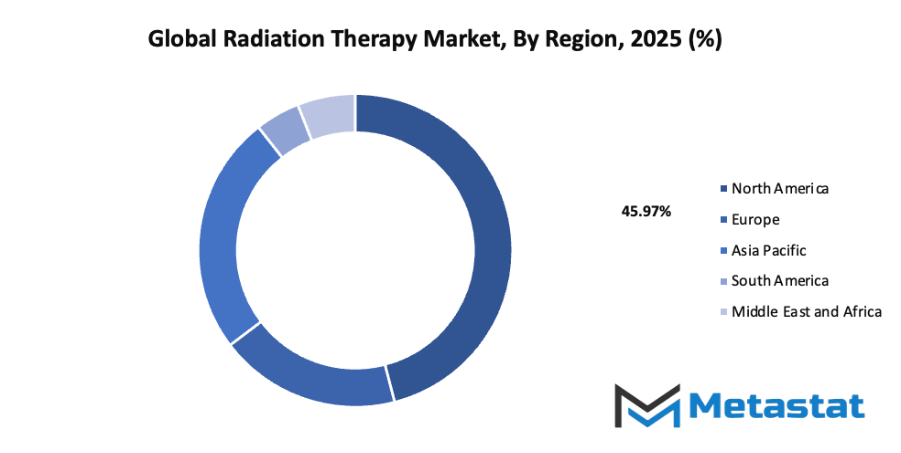
Growth Drivers
Technological advancements in radiation therapy equipment: Technological improvements in radiation therapy machines: Newer radiation therapy machines are developing with functionalities that improve accuracy and lower treatment times. New technologies like image-guided and proton therapy machines enable improved targeting of tumors while sparing healthy tissues. Further research and development will promote greater use and form the future of treatments.
Rise in cancer cases across the world: The rise in cancer cases worldwide is a major driving force for the global radiation therapy market. Increased life expectancy, lifestyle changes, and exposure to the environment all lead to increased diagnosis rates. With an increase in the need for successful treatments, radiation therapy stands as one of the most trustworthy and accepted treatment options.
Challenges and Opportunities
High expense linked with radiation therapy equipment and treatment: Sophisticated radiation therapy equipment involves a large amount of capital outlay, and thus hospitals and patients bear the financial burden. Specialized training and maintenance cost extra. The high expenses generate inequalities in access, particularly in low-income nations, restricting access to advanced therapy. Cross-subsidization remains an important challenge for future expansion.
Possible side effects and risks of radiation therapy: Radiation therapy works but can cause risks like fatigue, skin reaction, and harm to healthy tissue around the area being treated. Side effects that last a long time can also affect quality of life. Getting effectiveness against patient safety just right will be key to enhancing trust and to promoting more use of treatments.
Opportunities
Increased need for customized radiation therapy treatments: Future prospects in the global radiation therapy market are in personalized treatment methods. Customizing treatment based on genetic data, cancer type, and patient need can really make a difference. Precision medicine with improved imaging will enable treatments that are safer, more effective, and specifically matched to each patient's case.
Competitive Landscape & Strategic Insights
The global radiation therapy market should see strong growth in the future as cancer rates keep increasing and sophisticated healthcare technologies become increasingly popular. Radiation therapy has been accepted for many years as a primary treatment option for various forms of cancer, and the demand for enhanced technologies will only increase further as populations age and healthcare facilities grow in developed and emerging markets. As cancer therapy evolves toward more precise, personalized, and potent methods, radiation therapy is on the path to becoming an era characterized by innovation, availability, and harmonization with other advances in medicine. Varian Medical Systems, Inc., Elekta AB, and Accuray Incorporated are some of the companies that have taken the lead in establishing the platform of this market by developing sophisticated linear accelerators and robotic systems that enhance the precision of targeting.
ViewRay Technologies, Inc. and Siemens Healthineers AG have reinforced further development through the provision of imaging-guided therapy solutions, enabling oncologists to provide treatment with greater precision. IBA Dosimetry GmbH and GE Healthcare have also made considerable contributions through sophisticated tools that enhance treatment planning and monitoring, necessary for safety and effectiveness. These ongoing advances in healthcare equipment are paving the way for a future in which treatments become quicker, more precise, and less invasive for patients. In the coming years, the global radiation therapy market will probably see increased focus on artificial intelligence and machine learning. RaySearch Laboratories AB has already made a move in this direction by establishing highly sophisticated treatment planning systems that utilize AI to forecast outcomes and optimize treatment.
Hitachi, Ltd. and ALCEN (PMB) are also developing proton therapy solutions, which are rapidly considered the next step in minimizing side effects and enhancing treatment precision. ProTom International and Philips Healthcare are working by pushing imaging solutions that enable clinicians to see tumors in real time, opening up possibilities for more adaptive treatment. Increasing investments in the healthcare infrastructure in Asia, the Middle East, and Latin America will also be creating new opportunities for the market. CIVCO Medical Solutions, Mevion Medical Systems, and Panacea Medical Technologies Pvt. Ltd are growing their reach across these markets by providing affordable solutions that meet the needs of budget-strapped hospitals but intense patient demands.
The dissemination of affordable, high-performance technology will bridge the gap between developed and developing healthcare systems, making advanced cancer care more accessible to the masses. In the future, one of the key changes for the global radiation therapy market will be increasing interaction among technology suppliers and medical institutions. DOSIsoft SA and Eckert & Ziegler BEBIG are both developing targeted software and brachytherapy systems that, when integrated into current radiation methods, offer a more comprehensive treatment solution. As healthcare providers focus on multidisciplinary cancer care, radiation therapy will not stand alone but will integrate more deeply with surgical, pharmaceutical, and immunotherapy treatments. This integration will not only improve patient survival rates but also enhance quality of life during and after treatment. Market size is predicted to increase from USD 7272.2 million in 2025 to more than USD 10168.7 million by 2032.
Radiation Therapy will continue to dominate but experience increasing competition from new formats. The future of the global radiation therapy market will be defined by accuracy, innovation, and worldwide accessibility. Advances in technology, coupled with collaborative innovation among top players, will propel cancer care into a future that is faster, safer, and more individualized. As healthcare ecosystems globally continue to invest in the next generation of solutions, radiation therapy will stay at the center of contemporary oncology, bringing hope and healing to millions of patients globally.
Report Coverage
This research report categorizes the global radiation therapy market based on various segments and regions, forecasts revenue growth, and analyzes trends in each submarket. The report analyses the key growth drivers, opportunities, and challenges influencing the global radiation therapy market. Recent market developments and competitive strategies such as expansion, type launch, development, partnership, merger, and acquisition have been included to draw the competitive landscape in the market. The report strategically identifies and profiles the key market players and analyses their core competencies in each sub-segment of the global radiation therapy market.
By Technology:
- External Beam Radiotherapy
- Internal Beam Radiotherapy/Brachytherapy
- Systemic Radiotherapy
By Application:
- Breast Cancer
- Prostate Cancer
- Lung Cancer
- Brain Cancer
- Other
By End-User:
- Hospitals
- Cancer Treatment Centers
- Ambulatory Surgical Centers
- Others
Key Global Brewery Software Industry Players
- Varian Medical Systems, Inc.
- Elekta AB
- Accuray Incorporated
- ViewRay Technologies Inc.
- Siemens Healthineers AG
- IBA Dosimetry GmbH
- GE Healthcare
- RaySearch Laboratories AB
- Hitachi, Ltd.
- ALCEN (PMB)
- ProTom International
- Philips Healthcare
- CIVCO Medical Solutions
- Mevion Medical Systems
- Eckert & Ziegler BEBIG
- Panacea Medical Technologies Pvt. Ltd
- DOSIsoft SA



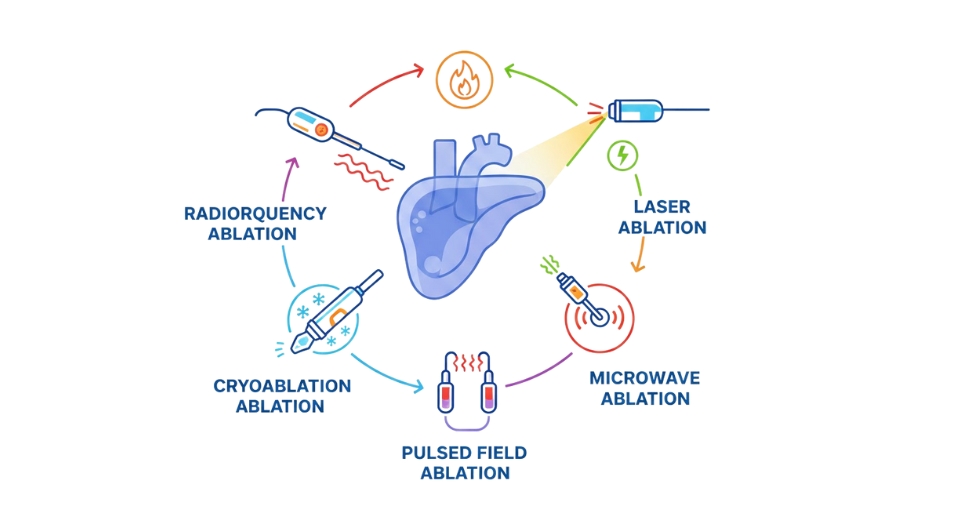

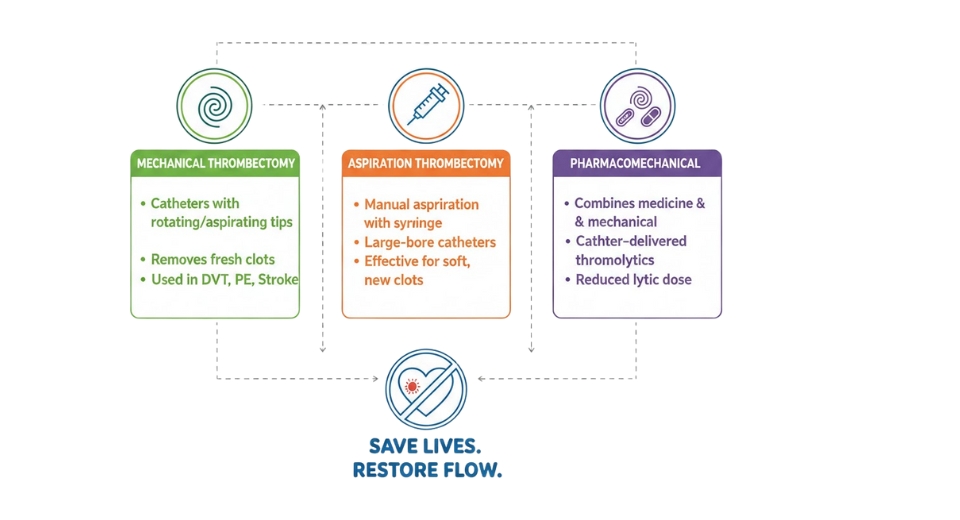
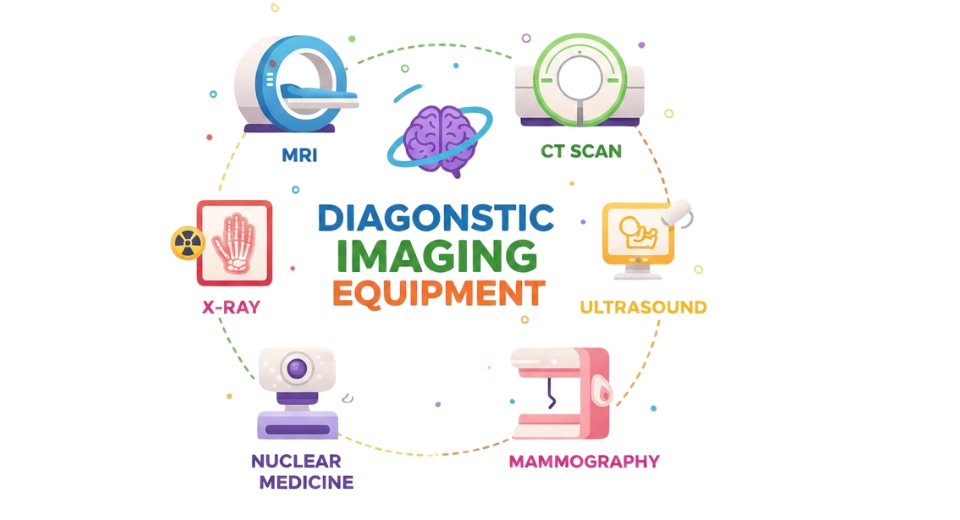

 US: +1 3023308252
US: +1 3023308252






